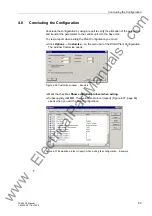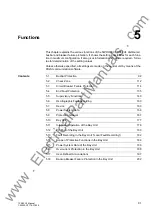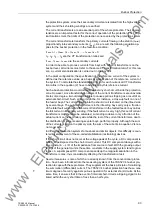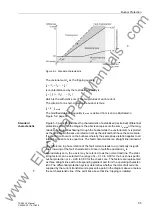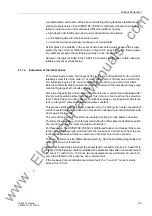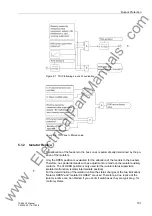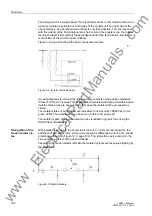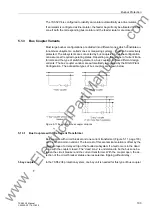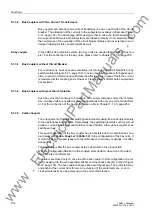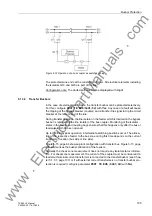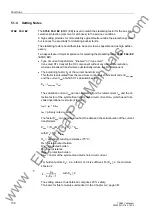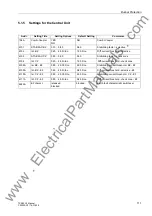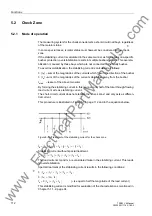
Busbar Protection
97
7SS52 V4 Manual
C53000-G1176-C182-3
the current above the axis to an extent that the current/time area is equal to that of the
preceding half-cycle below the axis.
Figure 5-5, page 98 b) illustrates the formation of the measured value according to the
measurement algorithm employed assuming that the current flows into an external
short-circuit beyond the protected zone. The current thus flows through at least two
current transformers. One of them is assumed to be able to give a correct replica of
the current whereas the other exhibits a behaviour as under
Figure 5-5, page 98 a). With the stabilizing factor k = 0.65 a tripping condition occurs
about 8 ms after inception of the short-circuit. This condition persists for about 4 ms
before the restraint prevails again. The reversed current after zero current crossing
does not make itself felt in the tripping sense since correct transformation is present.
The second half-wave, however, again brings about a tripping condition which again
lasts for about 4 ms. Due to the continuing decay of the DC component, the previously
saturated current transformer recovers its ability for transformation. The tripping differ-
ential current I
d
subsequently does not reach the magnitude of the stabilizing current
k
×
I
s,mod
.
Figure 5-5, page 98 c) illustrates the formation of the measured value on the following
assumption: The current flows into a short-circuit within the protection zone via a cur-
rent transformer. The current transformer shows the behaviour illustrated in Figure 5-
5, page 98 a). The stabilization factor k is again assumed to be 0.65. In this case the
tripping differential current I
d
prevails right from the beginning of the short circuit. But
since the current transformer saturates, the tripping quantity disappears after 6 ms.
The opposite half-cycle will have no tripping effect. As the process proceeds, the cur-
rent will set up a tripping condition in the opposite half-cycles of the measuring circuit
as well.
A comparison of the measured values in cases b (external short-circuit) and c (internal
short-circuit) shows, besides a temporary similarity, two essential discriminating fea-
tures:
•
After a few cycles the DC component has largely decayed. Each half-wave, i.e. the
current in both directions, delivers a correct measured value according to the fault
location.
•
At the inception of the short-circuit
−
usually at least for a quarter of a cycle
−
the
correct measured value is formed according to the fault location.
These two facts are utilized by the SIPROTEC 7SS52 V4 distributed busbar and
breaker failure protection to distinguish between external and internal short-circuits.
They are particularly valuable when large short-circuit currents and DC components
severely saturate the current transformers forcing the protection to operate under se-
verely aggravated conditions.
www
. ElectricalPartManuals
. com







